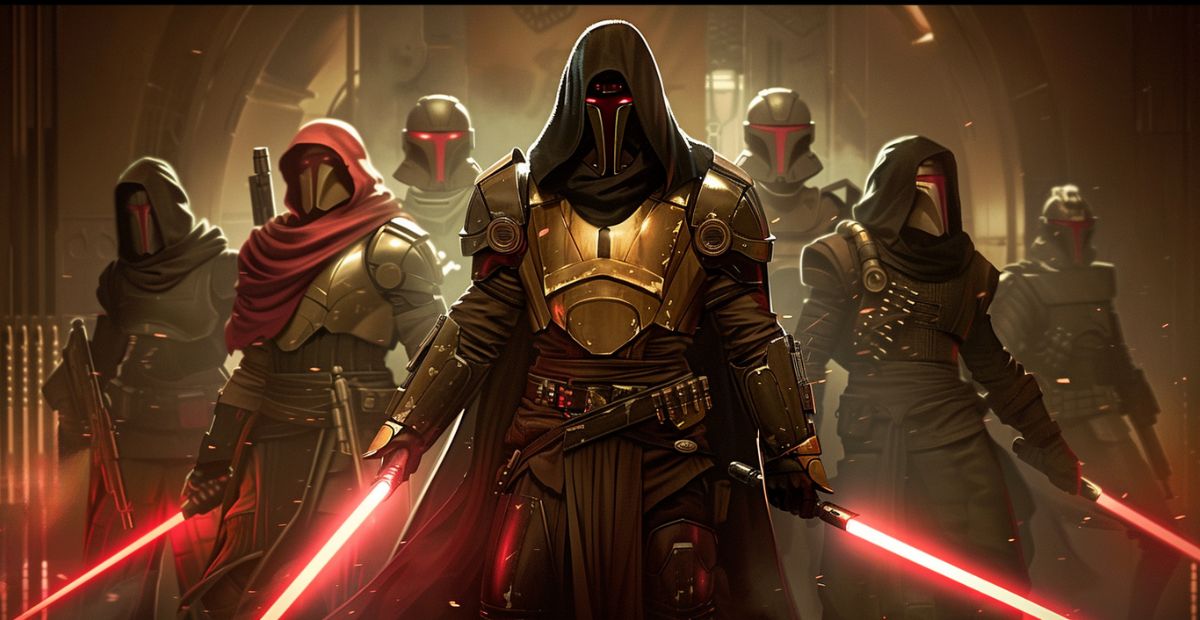I’ve always wondered why the Sith, even though they were outnumbered by the Jedi, often came across as more powerful. That question led me to the Sith Acolytes—and the brutal training they went through.
Where Jedi training focuses on balance and emotional control, the Sith embrace chaos, rage, and power. Their methods are harsh, but effective. Some Acolytes didn’t just survive the process—they came out stronger than the Jedi Masters they eventually faced.
Here’s a closer look at how that path worked.
Sith Acolytes Overview

We always talk about Sith Lords and apprentices—but before anyone ever gets to that level, they usually start as something else entirely: a Sith Acolyte. It’s not a title we hear a lot in the movies, but in the lore, especially in Legends, it’s where a Force-sensitive hopeful begins their climb into the Sith hierarchy.
The title existed long before Darth Bane rewrote the rules. Back then, the Sith were an entire order—dozens, sometimes hundreds of dark side users, all vying for more power. Acolytes were at the bottom of that ladder. They weren’t true apprentices yet, just candidates trying to survive long enough to earn a master’s attention.
Then Bane came along and changed everything. The Rule of Two stripped the entire system down to just a master and an apprentice. No more armies of Sith. No more rivals. Just two. That shift wiped out the traditional path from Acolyte to Sith Lord—but the title still lingers in some corners of the lore.
And unlike a Jedi Padawan, a Sith Acolyte didn’t have structure or support. They weren’t nurtured. They were tested, pushed, and often discarded. To move up, they didn’t just have to learn. They had to prove they were worth keeping alive.
Survival-Based Training
In the days of the Reconstituted Sith Empire, becoming a Sith wasn’t just about having potential—it was about surviving the process. Sith Acolytes were put through brutal training, and once they were deemed strong enough, they faced evaluation from Sith Overseers.
These Overseers acted as instructors at the Sith Academy. They were the ones who decided whether an Acolyte was ready to take the next step and serve under a Sith Lord as an apprentice. But getting to that point wasn’t easy.
Before any formal testing could happen, the Acolytes had to endure some of the harshest training imaginable. It wasn’t just about learning how to use the Force—it was about embracing the dark side fully. The lessons were built on cruelty, deception, and manipulation. Rage wasn’t something to control—it was fuel. And if you couldn’t use it to your advantage, you didn’t make it.
For many, the path ended there. Not because they failed a test—but because they didn’t survive the training.
Entry into Training
The process of entering Sith training varies. Some Sith organizations require sponsorship from an academy instructor, while others only require the individual to be Force-sensitive.
The “Sacrifice”
This is a test of the initiate’s dedication, often involving the killing of a loved one.
The timing of the sacrifice is dependent on the teacher and the needs of the acolyte, commonly placed at the start to ensure commitment, or at the end as a final test.
Training Regimes
Training in large scale Sith organizations is competitive and isolating. It’s common for several students to learn from a single instructor, and for Sith masters to tutor an apprentice individually.
The purpose of Sith training is to make the apprentice struggle for knowledge, while the master withholds as much as possible to prolong their own life.
Combat Training
Combat training begins in the classroom with the basics of lightsaber combat. Students are then guided towards a form that suits their physical attributes.
They are also provided with facilities for private practice. Some Sith academies specialize in training Sith warriors and marauders, who focus on physical combat and lightsaber skills.
Force Application Training
Sith training, conducted in a classroom environment, focuses on drawing on anger and using the Force for offensive applications. It starts with simple skills like telekinesis and advances to powerful displays like telepathy or Force lightning.
Interrogation and Assassination
During times of war against the Republic, Sith academies actively teach interrogation and torture, often on live subjects.
Assassination is such a vital skill that entire academies are devoted to training Sith assassins. These assassins are taught to feed off the Force presence of their targets and rely on ambush tactics.
Sith Acolytes Often Stronger Than Jedi Masters
The path from Sith Acolyte to Sith Lord is built on strength. Every trial is meant to push them past their limits and eliminate the weak. Those who survive come out more powerful.
Jedi training takes the opposite approach. It teaches emotional control, restraint, and balance within the Force. Their focus is on defense—deflecting blasters, protecting others, and avoiding aggression.
Sith training, by contrast, encourages dominance. Acolytes are taught to seek power and use it without hesitation. That drive often makes them more dangerous than Jedi Masters in terms of raw strength.

